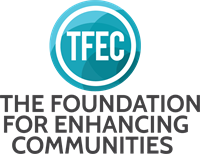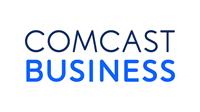Starting a landscaping business can be an incredibly rewarding venture, with opportunities to make an impact in your local community and build a sustainable business. However, success requires more than just knowing how to mow lawns and plant flowers. It involves strategic planning, effective marketing, the right equipment, and a commitment to customer satisfaction. In this guide, we will explore the key steps and strategies that can help you navigate the complex yet exciting process of launching your landscaping business.
Finding a Unique Niche to Differentiate Your Landscaping Business
When starting a landscaping business, it's important to think beyond basic lawn care. One way to set yourself apart from competitors is by choosing a unique focus. Whether it's specializing in eco-friendly landscaping or offering seasonal services, finding the right niche allows you to stand out and attract a specific customer base. Learn how to choose a landscaping niche that stands out to help define your market position and give your business a competitive edge.
Choosing the Right Landscaping Business Name
A well-thought-out business name is the first step in establishing a strong brand identity for your landscaping business. Your name should reflect the services you offer while being catchy enough to stand out in a competitive market. It’s important to ensure that the name resonates with your target audience and conveys the values of your business. When brainstorming, consider landscaping business name ideas that are both memorable and aligned with your company’s goals. Taking the time to pick the right name will set the foundation for your brand's success and recognition.
Building a Roadmap for Long-Term Business Success
A solid business plan is essential for laying the foundation of your landscaping business. It serves as a roadmap, guiding you through the challenges of launching and scaling your operations. Your plan should include a breakdown of your target market, pricing strategies, and financial projections. Additionally, you should account for marketing, customer acquisition, and long-term growth. A template to help you create a solid landscaping business plan will help you structure your plan and give you the tools to ensure your business thrives.
Essential Tools to Support the Growth of Your Landscaping Operations
Investing in quality equipment is a critical part of running a successful landscaping business. Whether you’re buying mowers, trimmers, or trucks, the right tools can significantly boost efficiency and job quality. While it’s important to start with the essentials, expanding your equipment as your business grows will help you offer more services. Before making a purchase, essential tools to support the growth of your landscaping operations can help ensure that your equipment choices align with your business needs and budget.
Navigating the Legal Requirements for Landscaping Services
Every landscaping business needs to be aware of the legal requirements in their area. It’s essential to ensure you're in full compliance with local regulations, including obtaining the necessary licenses and certifications. Whether you need a contractor's license or certifications for pesticide applications, these requirements can vary by location. To avoid potential fines, navigating the legal requirements for landscaping services is crucial before starting your business.
How to Increase Visibility and Attract Local Clients
Marketing is key to growing your landscaping business. In today’s digital age, having a strong online presence is essential. Creating a professional website and maintaining active social media profiles are effective ways to attract local customers. Local SEO strategies can also help you appear in relevant search results. By implementing marketing strategies to attract local clients, you can increase visibility and establish your business as the go-to choice in your area.
Using Customer Feedback to Improve Your Services
Customer satisfaction should always be a priority in your landscaping business. Satisfied clients are more likely to recommend your services and return for repeat business. Make sure to actively seek feedback, whether through surveys or casual conversations, and use it to fine-tune your services. By using customer feedback to improve your services, you can enhance the customer experience and build a loyal client base.
Launching a landscaping business requires a blend of practical skills, careful planning, and a commitment to quality. By focusing on finding your niche, building a strong business plan, investing in the right tools, and ensuring customer satisfaction, you can create a foundation for long-term success. With dedication and the right strategies in place, your landscaping business will thrive and grow within your community.
Discover the business community of the Cumberland Valley by visiting the Cumberland Valley Basin Alliance and explore how you can connect, grow, and thrive with us!







